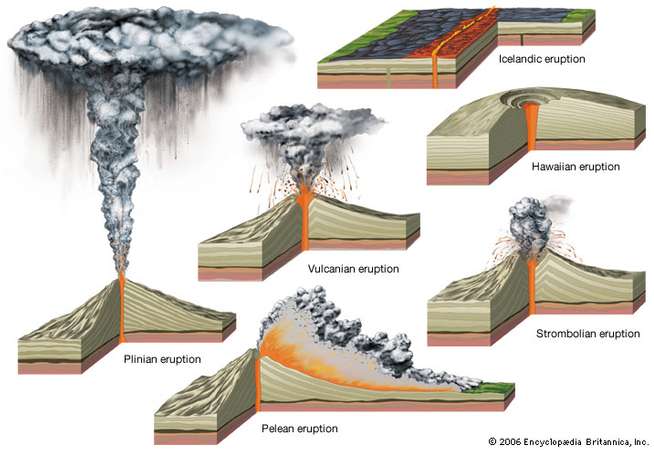Volcanic eruptions are mainly divided into two types: effusive, where lava flows and escapes, and explosive, where the magma is fragmented by the explosion of the gas bubbles inside it.
Explosive eruptions are in turn divided into 5-6 main types according to their energy, the volume of pyroclastic products emitted and how far they travel from the eruptive centre.
In the presence of prevalent effusive activity, we have both Hawaiian eruptions, typical of the Hawaiian archipelago, and Icelandic eruptions. These are mainly characterised by lava flow effusion and low explosiveness, with bombs and lapilli not going beyond 2 km from the eruptive centre. In the case of Icelandic type eruptions, there is no real volcano, but there is an eruptive fissure, which can even be several tens of kilometres long.
In the presence of both effusive and explosive eruptions, but with prevalence of the former, we talk about Strombolian eruptions, typical of the island of Stromboli, where the products of the explosive activity do not disperse for further than 10 km from the central structure.
In the presence of mixed effusive and explosive activity, but with prevalence of the latter, we have Vulcanian eruptions (the typical place is the island of Vulcano) and Plinian eruptions, the former with lower explosiveness and fewer dispersion of pyroclastic products (< 20 km).
Pelean eruptions, whose name originates from Pele, the Hawaiian goddess of volcanoes, are highly explosive, with burning clouds forming along the sides of the volcano.